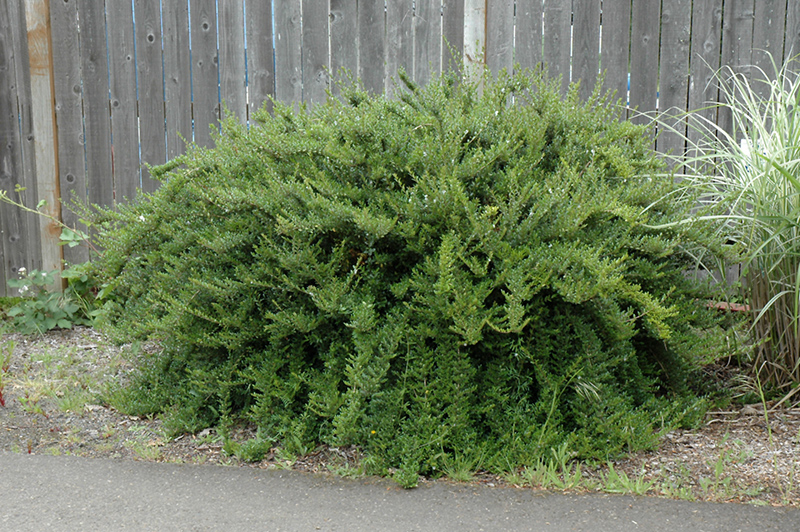Find Plants
Height: 5 feet
Spread: 5 feet
Sunlight:
![]()
![]()
Hardiness Zone: 5
Other Names: Boxleaf Honeysuckle, Shrubby Honeysuckle
Description:
A low, bushy shrub valued for its showy white flowers in spring; the fruit is purple and inedible and rarely forms when clipped regularly; makes a fantastic hedge, takes pruning well; confused with cotoneaster but is distinguished by alternate foliage
Ornamental Features
Box Honeysuckle has attractive green evergreen foliage on a plant with an arching habit of growth. The tiny glossy oval pinnately compound leaves are highly ornamental and remain green throughout the winter. It is bathed in stunning lightly-scented creamy white tubular flowers at the ends of the branches in late spring. It produces deep purple berries in late summer.
Landscape Attributes
Box Honeysuckle is a dense multi-stemmed evergreen shrub with a shapely form and gracefully arching branches. Its relatively fine texture sets it apart from other landscape plants with less refined foliage.
This shrub will require occasional maintenance and upkeep, and is best pruned in late winter once the threat of extreme cold has passed. It is a good choice for attracting butterflies and hummingbirds to your yard. Gardeners should be aware of the following characteristic(s) that may warrant special consideration;
- Insects
Box Honeysuckle is recommended for the following landscape applications;
- Mass Planting
- Hedges/Screening
- General Garden Use
- Groundcover
- Topiary
Planting & Growing
Box Honeysuckle will grow to be about 5 feet tall at maturity, with a spread of 5 feet. It tends to fill out right to the ground and therefore doesn't necessarily require facer plants in front, and is suitable for planting under power lines. It grows at a medium rate, and under ideal conditions can be expected to live for approximately 30 years.
This shrub does best in full sun to partial shade. It does best in average to evenly moist conditions, but will not tolerate standing water. It is not particular as to soil type, but has a definite preference for alkaline soils. It is highly tolerant of urban pollution and will even thrive in inner city environments. This species is not originally from North America.
Disclaimer - This Plant Finder tool is an online resource representing many of the varieties that we carry over the course of the season, and is intended for informational purposes only. Inventory varies seasonally, so we cannot guarantee that every plant will be in stock at all times - please contact the store directly for availability. It does not include our entire inventory of plants, so be sure to visit our store to see varieties that may not be represented on this list.


